
You never let your baby sleep with a pillow. You heard it could cause SIDS, so you weren't about to take any chances. But now that your little one is growing up, is it time to give them a toddler pillow?
To help you decide if your child is ready to rest their head on something besides their mattress, here's more information about safe sleep practices for toddlers and tips for choosing the best pillow for your growing child.
Table of contents
- When can your child safely start using a pillow?
- What is a toddler pillow?
- Pros and cons of a toddler pillow
- Features to look for in a toddler pillow
- Toddler sleep safety
- How to introduce a pillow
- Care for your toddler’s pillow
When can your child safely start using a pillow?
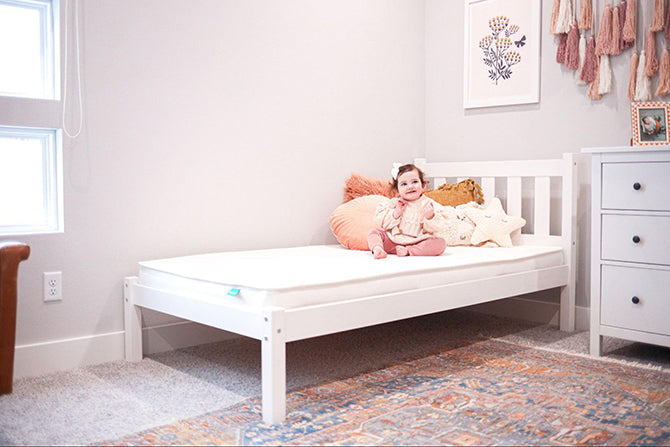
Many parenting experts say that it's OK for your toddler to sleep with a pillow once they turn one. Others recommend waiting until your baby is 18 months old or until you move them from their crib to a toddler bed.
If your child is sleeping well without a pillow, there’s no need to rush out and buy one. But if you notice your child is struggling to fall asleep or stay asleep, a pillow might help make them more comfortable.
If you're trying to decide if your little one is ready to make the change, here are some signs you can watch for:
- Propping their head up on a rolled-up blanket or toy
- Restless sleeping with tossing and turning
- Sleeping with their arm under their head
If your toddler displays any of these behaviors, a pillow might help. But if you’re still unsure, talk to your child’s pediatrician to get their professional opinion.
What is a toddler pillow?
Once you decide your toddler is ready, look for the right toddler pillow. Unlike an adult pillow, these are smaller and designed specifically for kids.
Toddler pillows are typically more firm than soft. Though you might not think it feels as comfortable, this firmness level is vital to your child's safety. In addition, a firm pillow helps keep your child's head from sinking too far.
Why can’t a toddler use an adult pillow?
If you have some extra pillows around the house, it might be tempting to give one of those to your toddler. But there are a few reasons why this isn't a good idea:
- Size — Adult pillows fit adult-sized heads. Your little toddler won't need nearly that much space. Using too big of a pillow can pose a suffocation risk.
- Softness — Many adult pillows are too fluffy for toddlers. If the pillow is too soft, your child's head may sink, and their airway could become blocked.
- Materials — You don’t want your child’s head to come into contact with the materials used in certain adult pillows. Some could cause allergic reactions or a rash on your child’s sensitive skin. Others could be a choking hazard.
It's best to buy a toddler pillow for safety. Then, when your child grows bigger, you can transition them to a full-sized option.
Pros and cons of a toddler pillow
If you’re still on the fence about whether or not to give your toddler a pillow, here are a few pros and cons to consider.
Pros
Sleeping with a pillow can be beneficial. It can help:
- Promote proper spine alignment. A firm pillow that’s the right size and thickness can help keep your toddler’s spine in a healthy position while they sleep. This is especially important if your child sleeps on their back or side.
- Prevent shoulder pain. Without a pillow, your toddler might put their head on their arm. Sleeping in this position can make the shoulder fall asleep, which can be painful when they wake up.
- Make your child feel more comfortable. Many adults think it feels nice to plop their head down on a pillow, and your toddler may enjoy that feeling, too. Some kids just sleep better with one.
- Your child feel more grown up. Let’s face it, your toddler wants to be like you. And if you sleep with a pillow, they might want one too. Moving them into a toddler bed with a pillow can help them feel more independent.
Cons
While using a toddler pillow has some benefits, there are a couple of downsides to consider.
The pillow could:
- Get stuck in the crib bars. The pillow could get caught between two bars and wind up over your child’s face. In this scenario, part of the pillow would be stuck, and your child might suffocate underneath it if they couldn’t get free.
- Cause overheating. If your toddler moves a lot in their sleep and gets sweaty, the pillow could retain heat and make them too warm. In this case, you’ll want a breathable pillow that will help keep them cooler.
- Leave knots in their hair. Pillows and bedheads often go hand-in-hand. If your little one’s hair has been more difficult to manage since you gave them a pillow, it could be their pillowcase. Consider switching to one made of silk to see if it helps.
Note: To keep your child safe, it’s best to hold off on introducing a pillow until they’re out of the crib.
Features to look for in a toddler pillow
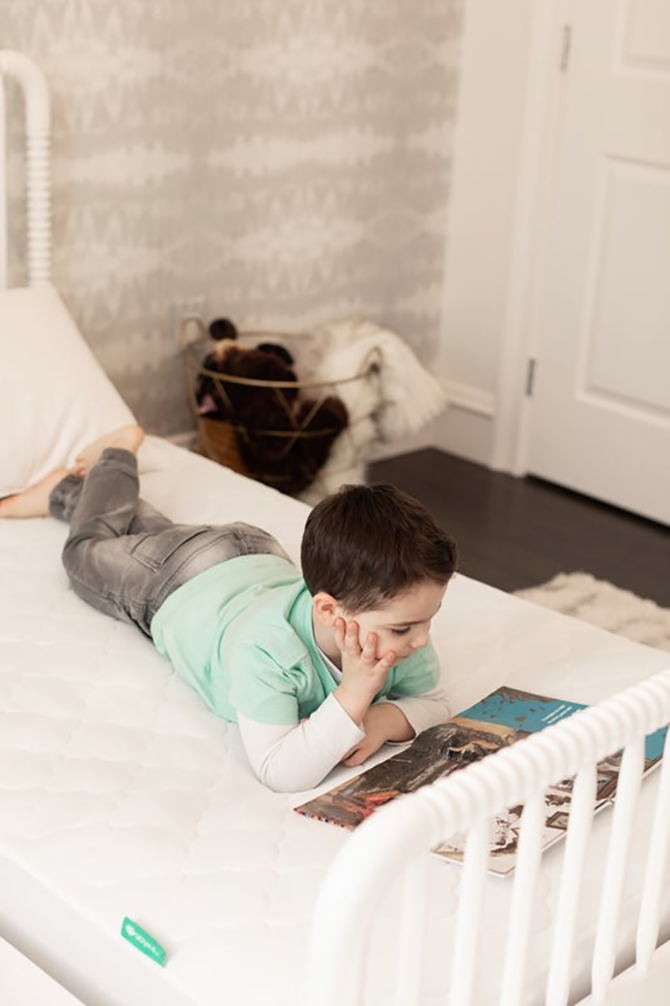
Now that you know what a toddler pillow is and why you might want to give one to your child, it's time to start shopping for the perfect pillow. Here are some features to look for.
Hypoallergenic materials and filling
We mentioned this briefly above, but choose the materials in your child’s pillow carefully. You don't want them using one that's going to off-gas at night or cause allergic reactions.
Always check the label on a pillow before you buy it. Look for one made from hypoallergenic materials. You want to ensure both the outer cover and the filling meet this requirement.
Organic cotton is a good choice for the outside of a toddler pillow as this material is soft and breathable. It'll help keep your child from getting too hot at night.
When it comes to the filling, you have a few options. Polyester fill is a popular choice because it's affordable and hypoallergenic. Memory foam is another possibility.
Some pillows contain buckwheat, hemp, and other natural materials. However, these aren't always a safe option for your child. If any of these small pieces of stuffing fell out, your toddler could choke on them. Keep the size of the fluff in mind when you’re shopping.
Finally, since toddlers have potty-training accidents, it's also important to find a pillow that’s washable. That way, you can keep it clean and fresh. For the easiest maintenance, look for one that can go into the washing machine and keep a backup on hand.
It’s also a good idea to opt for a Waterproof Crib Mattress Pad and have Extra Crib Mattress Covers on hand for late-night accidents. Being prepared alleviates a lot of stress and allows you and your little one to get back to sleep as quickly as possible!
Size
As we mentioned earlier, you don't want your toddler using a standard or queen pillow. Instead, look for a toddler pillow designed for smaller heads.
These are typically about 13 by 18 inches. That's just the right size for your little one.
Because of the small size, your regular pillowcases won't work on a toddler pillow. Instead, you’ll need to buy a special case. Look for one that fits snugly so there’s no extra material your child can get caught in.
Comfort
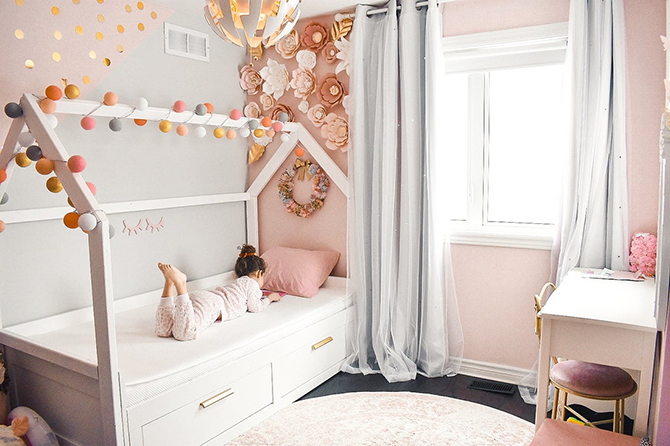
A big reason you're buying a pillow in the first place is to help your child sleep more soundly. However, it's important to remember that your child’s needs are different from your needs. The comfort their little body is looking for doesn’t necessarily mean squishiness.
Remember they've been sleeping without a pillow for their entire life. They're used to resting on a flat, firm surface. So, when you purchase a pillow, look for one that is firmer than the one you use.
A good toddler pillow might even appear a bit flat. If you push your hand down into the pillow, you want it to quickly bounce back into shape. If it takes a while for the pillow to recover, it's too soft.
A firm pillow provides the support your child needs. It helps keep their neck and back in alignment, which can lead to fewer aches and pains in the morning. Pillows that are too soft don't offer this type of support.
Adjustability
The toddler stage will be over before you know it. Since your little one is growing so quickly, an adjustable pillow might help ensure their changing needs are met.
Some pillows have an invisible zipper that allows you to add or remove stuffing. This means you can adjust the pillow’s firmness as your child grows.
If you go this route, you’ll want to make sure your toddler doesn’t have access to the zipper. Otherwise, they could empty it on their own. An enclosable pillow cover can prevent this.
Packaging
When you buy a toddler pillow online, it may arrive compressed in a vacuum-sealed tube. This is a common packaging method for pillows that helps save space during shipping. However, it can affect the shape and firmness of the pillow.
You won’t be able to open the package and give it to your toddler right away. Instead, you’ll need to fluff it up and give it time to expand fully. It can take up to 72 hours for that to happen. Then your child will have the support they need.
Toddler sleep safety
Toddler pillows can be one element of a safe sleep environment for your growing child. But here are a few more tips to ensure they sleep soundly and safely through the night.
Blankets
The safe sleep guidelines state that babies shouldn’t use pillows or blankets. These soft objects could pose a suffocation risk. But once your baby turns one, it’s generally considered safe to introduce a small, lightweight blanket.
Many parents decide to give their toddlers blankets before a pillow since, like we mentioned earlier, pillows and cribs don’t go together well.
Sleep Positions
You diligently kept your baby sleeping on their back. But now that they're a toddler, do they need to continue sleeping in that position?
While it's best to keep putting your child to sleep on their back, it's OK if they reposition themselves during the night. By this age, the risk for suffocation has decreased dramatically, and many toddlers prefer sleeping on their sides or stomach.
Bed or crib location
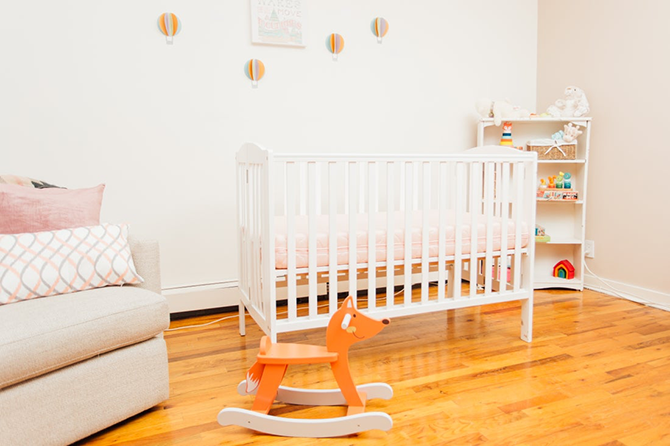
Toddlers are curious. If something interesting is within reach, they’ll grab it. That's why it's so important to position your child's bed in a safe spot.
Look around and try to see the world from their point of view. Are any cords dangling from the blinds or other window treatments within reach? If so, move the bed away from those hazards.
Are there any nursery decorations that hang down far enough your child could grab them? If there are, move them for the time being.
Is there a dresser or bookcase next to the bed? Make sure you don't keep anything heavy on top that your child could pull off. It's also important to shut each drawer completely. That way, your child doesn't empty the contents into their bed.
Continue checking around the room, looking for other potential dangers. This process will help you pick the best spot for your child’s bed.
Mattress firmness
Just because your child is getting older doesn't mean they're ready for a non-supportive mattress. It's best to keep using a firm mattress for as long as you can. They provide the support your child needs for a restful night's sleep and proper development.
Our Crib Mattress at Newton is the creme de la creme of toddler mattresses. The unique Wovenaire® Core is composed of 10% yogurt cup material and 90% air, making it very supportive. In addition, the soft, quilted cover helps your child rest comfortably.
Climbing hazards
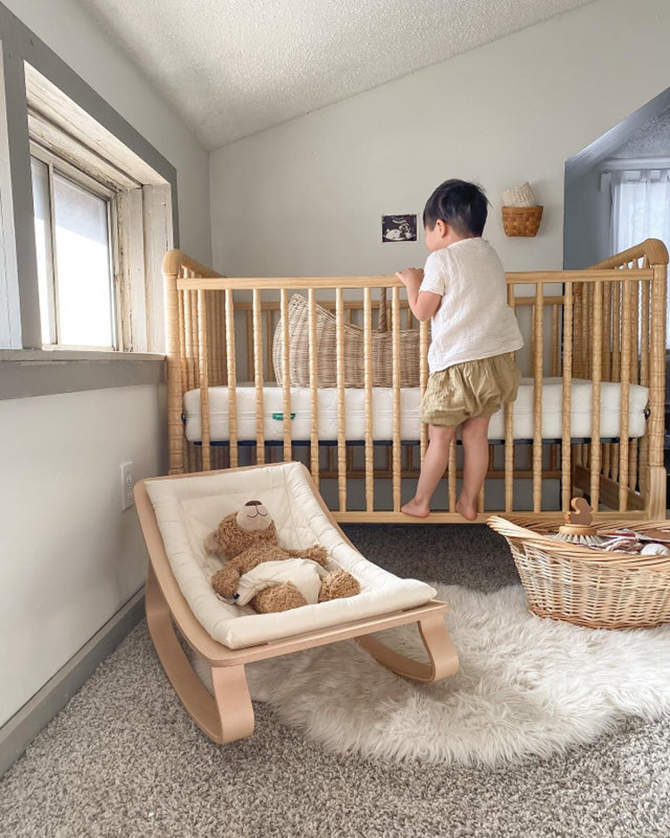
While a toddler pillow can help your child sleep peacefully, it can be used for other purposes during the day. For example, it can get turned into a stepstool. If your child tries to use the pillow to escape their crib, it could lead to a fall.
If your child is still sleeping in a crib, consider removing the pillow until they transition to a toddler bed. You should also make sure the mattress is in the lowest position to make the crib harder to escape from.
How to introduce a pillow
If you think your toddler is ready for a pillow, here are a few tips to help the introduction go smoothly.
Expect them to play with it
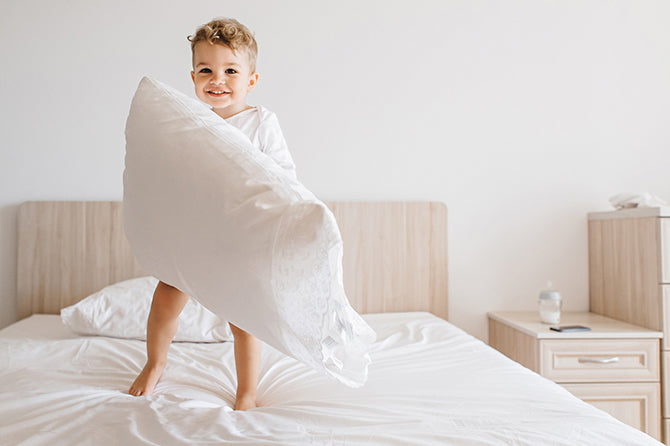
Bedtime is for sleeping. If you wait to show your toddler their new pillow until then, they’ll have a hard time not playing with it. Plus, the excitement of seeing something new could make it challenging for them to settle down and get some rest.
Instead of waiting for bedtime to introduce the pillow, bring them into their room a little early. You can make it an adventure by telling them you put a surprise in there for them and want to see if they can find it. Then let them explore.
When they find the pillow, give them time to play with it. They’ll likely crawl around on it, touch it, and pretend to be asleep on it. As they play, they’ll become more familiar with the pillow, and it won’t feel like such a foreign object when it’s time for bed.
Tuck them in
Once bedtime rolls around, help your little one get on the pillow. Position them with their head in the middle, and then tuck them in.
This might feel strange, so take a moment to check-in. Ask your toddler if they’re comfortable or how the pillow feels. Listen to their responses, and help get them settled.
Don’t be surprised if they don’t use it
It can take time to adjust to changes. If you look in at your little one later and realize the pillow is on the floor, that’s OK. They’ve slept without one for a long time, so you don’t need to wake them up trying to put their head back on the pillow.
Instead, wait until morning. Then ask your child to help put it back on the bed. You can try again at nap time. Eventually, they’ll get used to it and keep it on the bed all night.
Also, know that some kids simply prefer to sleep without pillows. If your toddler’s pillow is going unused, don’t stress about it. Every child has their own preferences, and as long as they’re sleeping safely, that’s what matters.
Try not to play fetch
Some kids think playing " fetch" is a fun way to get out of sleep. If your little one tosses their pillow to the ground shortly after you leave the room, retrieving it for them could inadvertently begin this game. They’ll likely throw it again. And again.
To prevent this, let them know you won’t be picking their pillow up again until morning. It won’t hurt them to sleep without one.
Let your child choose the pillowcase
Toddlers love to have control over things, so let them choose between two or three pillowcases. Have them touch and feel each one to see which they like best. This will give them a sense of ownership and make them more excited to use the pillow.
Read books about pillows
Bedtime is a great time for sharing books with your child. To help them get used to their new toddler pillow, read a book or two about pillows together.
Here are a few of our favorite titles:
- My Pillow Keeps Moving by Laura Gehl
- Pillow Places by Joseph Kuefler
- My Favorite Pillow by Sally Huss
- The Perfect Pillow by Eric Pinder
These books can help your child have sweet dreams on their very own pillow. They might also inspire a little pillow fun during the day.
Caring for your toddler’s pillow
Once your toddler starts using a pillow, here are a few things you can do to keep it in good shape:
- Keep it clean. Your toddler’s face will be spending a lot of time on that pillow. Make sure to wash the pillowcase weekly to keep germs at bay. And whenever the pillow needs to be cleaned, follow the manufacturer's recommendations.
- Examine the pillow regularly. Each time you change the pillowcase, take a moment to look it over. If you see any holes where stuffing could get out, it’s time to replace the pillow. Safety comes first.
- Consider a waterproof cover. Accidents happen, especially with toddlers who are potty training. A waterproof cover can keep fluids of any type from staining the pillow. These typically enclose the entire pillow and go underneath the regular pillowcase.
- Fluff it. Just like an adult’s pillow, toddler pillows can flatten over time. By fluffing it regularly, you’ll help it keep its shape. As an added bonus, this is a fun job to have your toddler help with.
Sweet dreams, little one
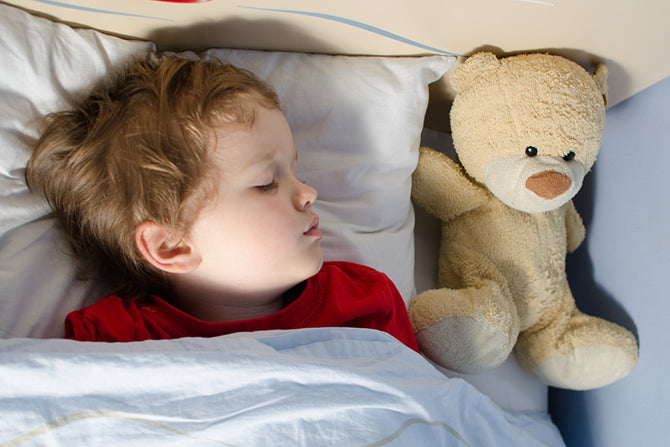
As your little one grows, the way they sleep and what they need changes. Your young child is no longer a baby, so it's much safer for them to use a toddler pillow at this age.
If your child is ready for the transition, use the tips above to find the perfect pillow. Then, when you tuck them into bed at night on their comfortable Crib Mattress, you won't have to worry about proper airflow or appropriate firmness.
While we can't guarantee that your child will magically sleep through the night, we know that they'll stay cozier all night long with the right pillow and mattress!